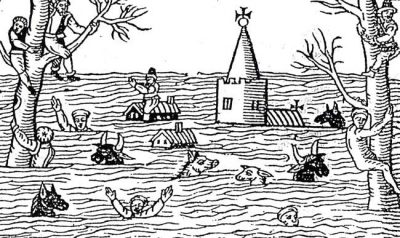Can we quantify past floods?
PDFChronological analysis and hydrometric quantification (i.e., finding a flow rate and not simply a water height) of past floods are essential to the prevention of flood risk. They allow to put a particular event in perspective with other possible floods and to locate it on a scale of intensity (low, medium, high, exceptional).
To conduct such studies, we distinguish three sources of information, differing from their chronology: (i) contemporary, based on hydrometric stations (often limited to the 20th century); (ii) archival, based on observations of the river and/or the damage caused (covers the period 16th-19th, or even the Middle Age); (iii) prior to any human observation, based on geological and biological indicators. Since the late 1950s, several studies have been carried out, mainly in the United States, China (a country with a relatively well-preserved and important history thanks to the early establishment of an administration) and Europe.
This work combines archive research and analysis, information critics (for example, homogenization of the reference frames in which river levels have been observed over time), hydraulic modelling. They necessarily associate extremely diverse skills of historian, hydrologist, hydraulician, geo-morphologist, botanist, etc.
In Europe, all the studies conducted lead to identify the period 1600 (or even 1400)-1900 as particularly active, with events not yet exceeded today.
For example, in the river Ardèche (France), the three highest floods known over the period 1770-2016 are all in the 19th century (1890 : 7550 m3/s ; 1827 : 6850 m3/s ; 1878 : 5950 m3/s). Over the period 1917-2016, the 1958 flood was the highest at 4800 m3/s.
On the Loire at Gien (upstream of Orléans), the highest flood in the 1937-2016 sequence (3320 m3/s on 8 December 2003) is much lower than the 1846, 1856 and 1866 floods, all three of which exceeded 7200 m3/s (the role of upstream dams built in the interval cannot explain such decrease).
This high river activity of the period corresponds to the period of the “mini Ice Age” that affected Western Europe from the Renaissance to the early 19th century. This “river crisis” has been interpreted as a transitional sequence, hence the result of high climatic irregularity. A study on the Narmada (India), on the other hand, shows a 1961 flood as the highest in at least 3000 years.
The same type of study has begun on droughts; again, the signature of widespread major events in Europe is beginning to be identified.
Further reading :
Robin NAULET, Use of historical flood information for better predetermination of flood risk. Application to the Ardèche basin at Vallon Pont d’Arc and St Martin d’Ardèche. Thesis, Université Joseph Fourier Grenoble – INRS ETE Québec, 2002 (in French).
- GLASER & al, Floods in Central Europe since AD 1300 and their regional context, La Houille Blanche N°5-2004.
L. DEZILEAU & al., Reconstitution of the Gardon floods, La Houille Blanche N°4-2014 (in French).
Emmanuel GARNIER. 500 years of drought and heat in France and neighbouring countries, La Houille Blanche N°4-2010 (in French).





